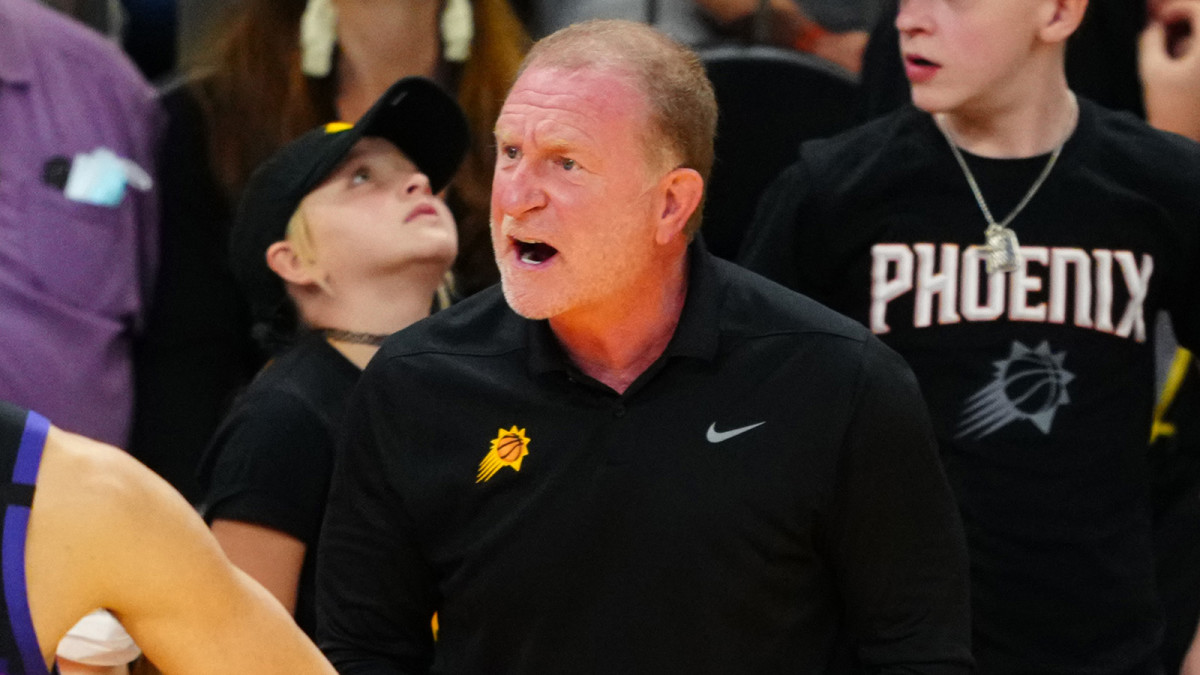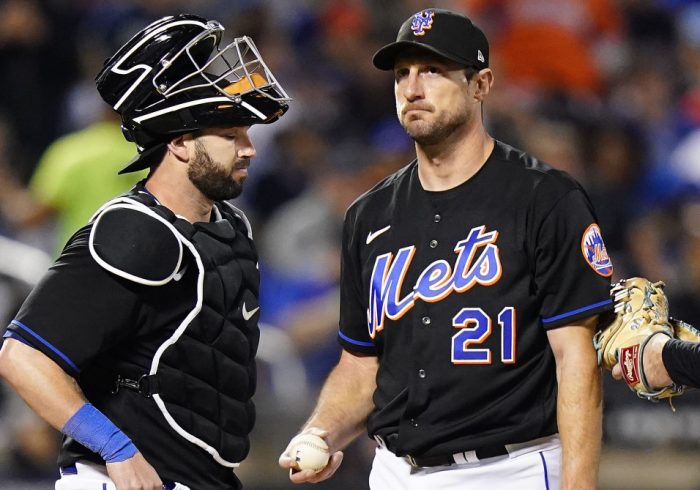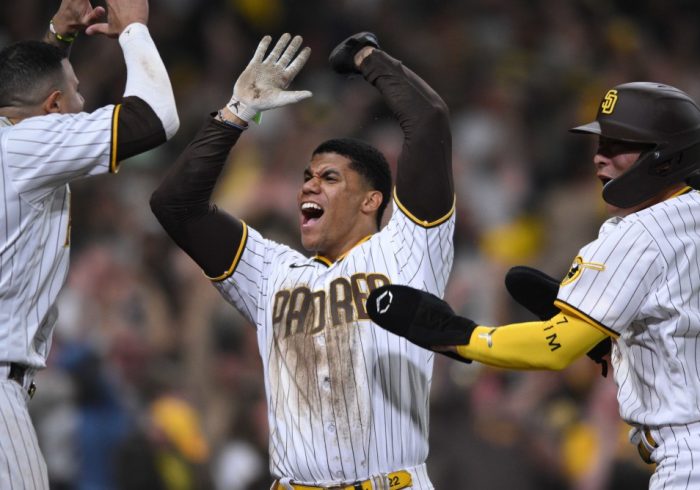Upon closely reading the extensive findings in the Robert Sarver investigation Tuesday, I could reach only one conclusion. Short of a Donald Sterling–sized smoking gun, there likely isn’t any sort of behavioral conduct the NBA would deem ugly enough to force an owner to sell.
What other conclusion could someone reach after reading it? In case you didn’t catch the major takeaways, throughout the years, the Suns and Mercury owner:
- Repeatedly—at least five times, according to the investigation—used the n-word in claiming to repeat what a Black person had said, even after being told multiple times by his Black (and white) employees that he was out of line for doing so.
- Made an array of lewd comments about players’ sex lives, jokingly suggesting that he should fly in a “plane of girls to keep players in their room” while the Suns were on a road trip back in 2012–13 and jokingly said the organization should have players impregnate local Phoenix strippers as a way to gain a sort of home-court advantage in free agency in 2015.
- Commented that one player’s significant other likely gave “good blow jobs,” and made crude remarks about the Suns players and the size of their genitalia. (The investigation also claims one witness said Sarver asked players back in 2009–10, one by one, whether they shaved their testicles.)
- Repeatedly made crude comments about the bodies of female team employees, including Suns dancers, and in one case walked past one of his employees in the hallway and asked, “Did you get an upgrade this summer?” upon noticing she’d gotten a breast augmentation.
- Told a pregnant woman who worked for the team she wouldn’t be able to do her job effectively upon giving birth because she would be “breastfeeding” and her “baby needs her mom, not their father.”
- Forwarded a pornographic video and other crude, sex-related jokes to a handful of male employees.
- Bullied his employees over the years, with more than 50 witnesses saying he yelled and cursed at them for everything ranging from the way free-agency recruiting videos were arranged to the way a candle smelled at an event and traffic slowing down the team’s bus.
What underscores all of this is the sheer number of employees who witnessed Sarver’s inappropriate behavior—something that speaks to how frequent it must have been. Of the 320 people who were interviewed as part of the investigation, more than 100 of them witnessed statements or behavior that “violated applicable standards,” according to the report, which was conducted by law firm Wachtell, Lipton, Rosen & Katz.
Despite all that, in his response to the investigation, Sarver said, in part, “While I disagree with some of the particulars in the report, I would like to apologize for my words and actions that offended our employees.” With Sarver’s suggestion that there were parts of the report he felt weren’t valid, it wasn’t surprising when ESPN reporters Adrian Wojnarowski and Baxter Holmes—the original writer whose story on Sarver prompted the investigation last year—reported that Sarver “was unaccepting of [the] idea he deserved a one-year suspension and $10 million fine for his behavior.”
That part, as shocking as it should be, seems to fall in line with Sarver’s worldview. Where most of us see a situation in which he’s fortunate to even be able to keep ownership of his team, Sarver sees one in which a one-year ban and $10 million fine is a bridge too far. Much like he could be told five separate times that it’s inappropriate for him to ever say the n-word, even if he’s repeating what he’s heard someone else say, yet still feel the need to say it.
His reported frustration with his punishment, as with the n-word situation, illustrates he’s learned nothing from this process. In fact, the investigation points out, among other diversity and equity initiatives, that Sarver cited a statistic outlining that 55% of the people in the Suns’ basketball operations department were of color, the highest rate in the NBA.
But let’s be clear on something: In some ways that makes some of these findings even worse. Sarver used the n-word while having the Blackest basketball operations group in a league that’s three-quarters Black, had Black employees bold enough to tell him it was out of line and then still continued to go against their wishes. (Mindblowingly, the report said it didn’t find that Sarver’s conduct was motivated by racial or gender-based animus.)
Similarly, while the report seemed to credit the fact that the team’s HR department has been strengthened recently—and can perhaps help foster a better organizational culture—it’s highly unclear what impact that would have on Sarver himself, who obviously isn’t subject to the same rules. If anything, it would seem fair to think he largely sets the tone for everyone else.
The Suns and Mercury owner will be suspended for one year and fined $10 million for his behavior.
Mark J. Rebilas/USA TODAY Sports
Take, for example, the statement the Suns released last year just before the ESPN report was published. “We understand that an outlet is considering publishing a proposed story that makes completely baseless claims against the Suns organization concerning a variety of topics. Documentary evidence in our possession and eyewitness accounts directly contradict the reporter’s accusations, and we are preparing our response to his questions,” it read.
The only way a team releases a statement like that—particularly after having the reporter’s questions in hand—is at the behest of a team owner. And responding that way, only for more than 100 witnesses to speak to Sarver’s violations, shows how heavy a hand he has within the team’s operations. It doesn’t inspire confidence that an abundance of change is on the way. Not if Sarver feels he shouldn’t have been given a suspension to begin with.
Taken together, the NBA—which was decisive and strong in barring the racist Sterling back in 2013—doesn’t come out of this looking good at all. Sarver has an entire treasure trove of bad offenses; ones that, if presented without the league’s ruling, most NBA fans would deem ugly enough to force a sale.
The league obviously felt differently, and there may be a complicating factor behind that. As my colleague Michael Rosenberg laid out in a column of his own, there would have been real potential for a long, drawn-out lawsuit had commissioner Adam Silver banned Sarver and made him sell his team. And unlike with the Sterling case, where there was a flashpoint moment that required an immediate response from the league—one that the NBA could willingly go to the legal mat for, if need be—this one took more than 10 months to investigate.
Put another way: There was no smoking gun here. We all can—and did—listen to the Sterling audio and draw the same conclusion. Most would probably agree about the findings on Sarver being highly inappropriate, but the report itself often reduced his behavior to sophomoric humor as opposed to hardcore racism and sexism. Because of that, it’s a certainty that Sarver’s lawyers would have argued that his behavior was no worse than that of other owners, and sued the league had they barred him.
That would have forced the NBA to put its cards—and the cards of its owners’ records—on the table in discovery, much like Sarver just had to do in this most recent investigation. And much like we’ve seen with the NFL’s lawsuits in recent years, leagues generally have less than zero interest in opening their closets to reveal skeletons.
Still, more could have seemingly been done here. Yes, the $10 million fine was the maximum allowed. But why not implement a zero-tolerance policy for Sarver going forward, at which point a sale could be forced? Why not further incentivize him to be a changed man, as opposed to one who will continue to push limits just because he feels like he can?
If the league feels it can’t take the ultimate step of removing an owner without a Sterling-type revelation, then it’s a sign that the troubling things done in the dark aren’t as punishable as the troubling ones we can see and hear. But if 100-plus witnesses to troubling behavior still aren’t enough to force a change at the top, how many more could we possibly need?
More NBA Coverage:



